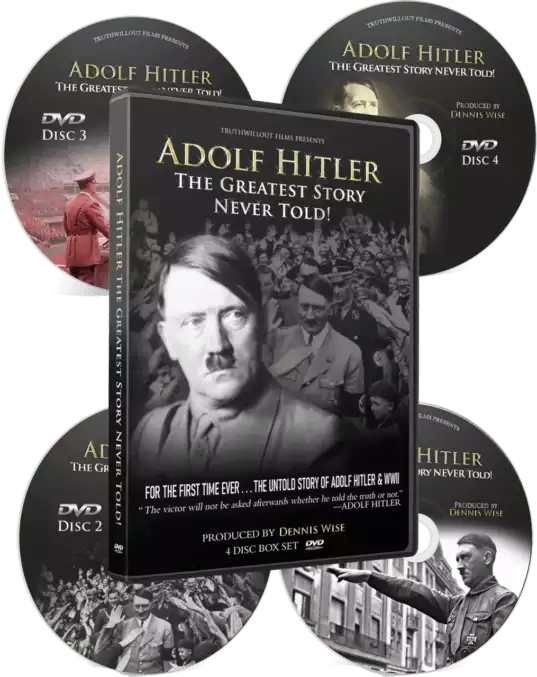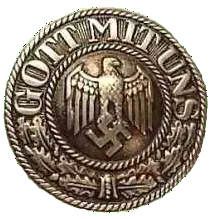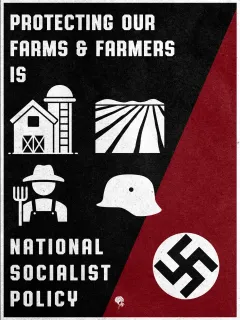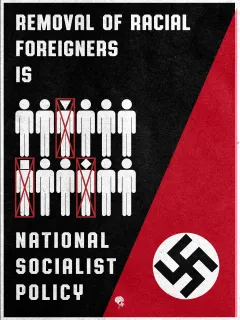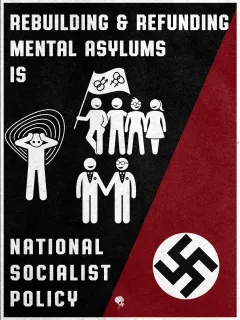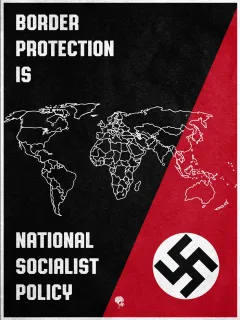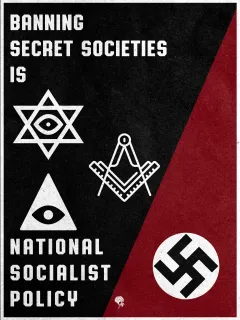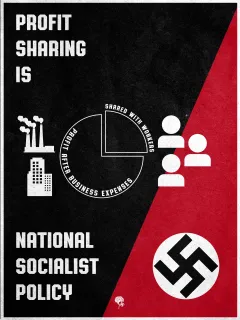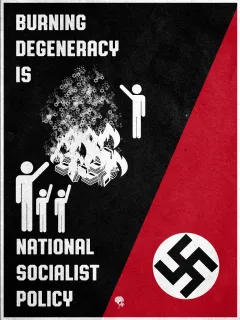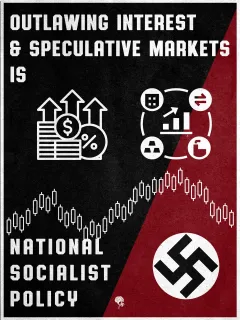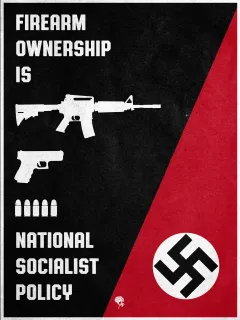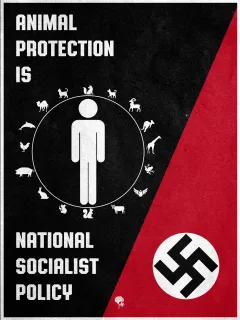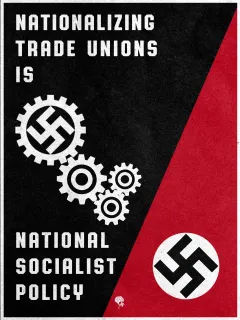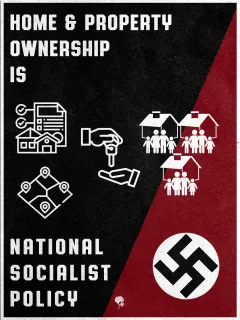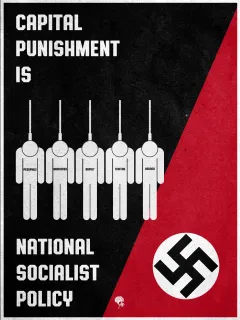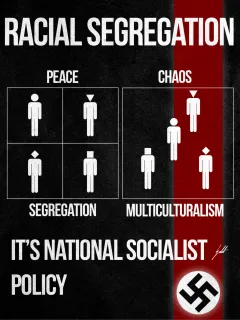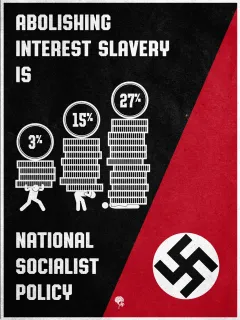Jews in Russia - Russian Jewry at the Beginning of the Twentieth Century
Russian Jewry at the Beginning of the Twentieth Century
Towards the beginning of this century Russian Jewry was a solidly united body of six million, in which, in spite of social stratification, all were unanimous concerning the question of mutual support in regard to the negative attitude towards the regime, which did not want to abolish the existing restrictions for people of the Judaic faith.
Making up less than four per cent of the population of Russia, and, in spite of the percentage quota, there were more than twelve per cent of Jews having higher education. This enabled them to take an active part in the cultural life of the country and to exert a considerable influence on the feelings of the broad masses, and in particular, on the attitudes of the intelligentsia and the youth.
The newspaper business, criticism, the legal profession and, to a considerable degree, literature were under strong Jewish influence and, as such, reflected the attitude of all of Jewry towards the regime.
And when, at the beginning of this century, the revolutionary and sharply oppositionist feelings towards the government started to grow and get stronger, the Jews treated them not only sympathetically but also took a most active part in them, coming at once to the surface in the crest of events.
For the government these feelings and the deliberate Jewish activity did not remain unnoticed and it started to show tendencies to further increasing the restrictive measures against the Jews. This reaction only aggravated in the Jews their negative feelings to the regime.
The Kishinev pogrom, the unsuccessful Japanese War, the ensuing terrorist activities (in which the Jews took more than a small part): all these taken together heated up passions and created preconditions for the big revolutionary events which came in the years 1904-1906.
Russian Jewry assisted in every possible way those who were struggling against the regime. Some openly and others covertly rendered moral and material support to the anti-government movement and in the proper way elucidated Russian and world events.
By this time more than a million Jews had emigrated from Russia to the USA. Many of these emigrants were taking an active part in the political life of America, particularly its periodical press, always maintaining the closest ties with their fellow tribesmen in Russia and, understandably, explaining many events from the point of view of those Jews who had remained in Russia.
Regular and lively connections were maintained, through the Jews living in border areas of Russia, with the European countries where a substantial number of revolutionaries from Russia resided as political émigrés ( among whose ranks was a large percentage of Jews). Through these connections, people were skillfully led across the border into Europe, and illegal propaganda literature was passed from Europe into Russia.
The government struggled with this situation, but without particular success: the channels for these illegal links with foreign countries were too numerous and too diverse.
The persons engaged in these activities were almost exclusively Jews.
Furthermore, inside the country, in all the oppositionist and revolutionary groupings, circles, organizations and parties, Jews played an enormous role. They were enrolling in committees and central organs as organizers (seldom as executives) or as initiators of all kinds of political activity, even as far as terrorism.
The many years' activity of Evno Azef, the instigator of many big terrorist acts, is well known to all. Michail Gotz, Bronstein-Trotsky, Nakhamkes-Steklov, Gertsenstain, Gershuni, the three Tsederbaums and a great many other Jews staffed the "revolutionary headquarters" and directed the activities of the government's enemies, the oppositionists as well as the revolutionaries.
And thus it is not surprising that the broad masses of Russia, watching all this, very frequently identified the word "Zhid" — Jew — with "revolutionary" or "rebel". In the eyes of the uncivilized masses, the latter began to substitute the former. This engendered sharp anti-Jewish feelings and created preconditions for the "Jewish disorders", as they were earlier called by the "People's Freedom", and later as "pogroms".
In the profoundness of the nation, whose ancestors created Russia and defended it with incredible sacrifices, a protest began to grow subconsciously against those new-comers who so easily and freely became the masters of the fate of their motherland. These new-comers began to treat scornfully many of those things which had been sacred to the nation and which were inseparably linked with the very concept of "Russia-Fatherland-Motherland".
To deny the presence and the growth of these feelings is hardly possible, especially now after the year 1917. It was in the turbulent years of the revolution that these feelings poured out in the bloody pogroms, perpetrated by the units of the Red Army which were commanded b the Jew Bronstein-Trotsky, (Glookhov, Novgorod-Seversk in 1918 and also the pogroms created by the Petlura men, among whose members of the government was one Ukrainian minister — a Jew from Kiev, Margolin. Another of the closest collaborators in organizing the movement of Makhno was the Jew, Arshinov. And finally, the feelings appeared as a certain "anti-Semitism", about which many books were written by the Jews, both communists (Larin): and non-communists (Schwartz and others).
These feelings latently existed in the first years of this century and irresponsible elements took advantage of them. This resulted, in the years of the first Russian revolution and in the years immediately preceding it, in a number of Jewish pogroms. The most known pogrom took place in the city of Kishinev in 1903, during which there were human sacrifices (49 killed).
The Kishinev pogrom provoked a storm of indignation not only in Russia but also in the whole world and embittered the Jews still more who were convinced that the pogrom was organized on "order" from the government, an attitude that was taken up by the world press.
That the "order" to organize the pogrom in Kishinev really existed may be sincerely doubted. Nowhere and at no time were there any proofs found that any such or similar "order" was issued by the Minister Pleve, neither before the 1917 nor after it, when all the archives of the Ministry of
Internal Affairs ended up in the hands of the revolutionary leaders. Through an objective study of all that was printed in connection with the pogrom (and very much was printed!), it is really possible to blame the government for its inability to put a stop to the pogrom with lightning speed by use of its police and army. The government was not able to stop the pogrom until after two days of strife, only after it made numerous arrests and dispersed the thugs. To call this delay an "order" means consciously to look for a reality.
No one accuses Kerens and Trotsky in pogroms, although during their command of the armed forces of Russia pogroms occurred which were incommensurably greater than in Kishinev. During these pogroms there were a great many victims and mass beatings of the Jews in Kalush and Tornopl in 1917 and in Glukhov and Novgorod-Seversk in 1918.
To organize a pogrom by means of an "order", without the presence of a corresponding feeling in the masses is not only difficult, but even impossible — it is scarcely necessary to prove this. In these cases it is appropriate to blame the authorities in using insufficient energy and speed to end the pogroms. And here Pleve, Kerensky, Trotsky and the Ukrainian minister Margolin would all be culpable; if it were proven that they could have stopped the pogroms immediately.
Two years later, in October of 1905, a pogrom occurred in Odessa, which resulted in many sacrifices. Among the victims were Jews, police and soldiers, who suppressed the pogrom instigators.
This time there was a good action by the Jewish fighting group created by the party "Poale-Zion", which, after the pogrom, sent its representative to Odessa to investigate the event. The account was published in 1906 in Paris in a pamphlet entitled "the Odessa Pogrom and Self-defense of Poale-Zion"
(94 pages) (Publisher — "The Western Central Committee of Self-defense of Poale-Zion").
The representative (whose name is not given), states, in giving the characteristics of Neigardt, the governor of the city of Odessa, the chief of police, General Val, and the public rabbi of Odessa, Kreps, in the following words:
"Neigardt — this is a Russian official, a Russian executioner, a provocateur, an official scoundrel, yet all in some European taste".
"The General Val — had a rough and sinister look, like to stamp with his feet, swear, growl bestially; in a word, he was a frank and unsophisticated executioner".
"The public rabbi — the well-known scoundrel Kreps reigned for a long time in the Odessa rabbinate contrary to the general wish".
Further in the pamphlet is a description of how the self-defense was created and armed: "a special committee of armament' which bought the weapons, was appointed; fifteen groups from the students were formed, where each group was identified by a number. Before the beginning of the pogrom, there were two hundred revolvers. But the next day, on Wednesday, one professor, a very brave man, got one hundred and fifty further revolvers". "On Wednesday a lot of weapons were distributed in one of the Zionist synagogues…"
On the previous page (51) of the same pamphlet, we read: "At the huge rallies in the university, the revolutionary organizations arranged money collections for the purchase of weapons, not only for defense but also for the possibility of an armed uprising..."
The acknowledgement, in the above pamphlet, by the representative of "Poale-Zion" himself that the aim of all the arming was not only self-defense but also "armed uprising" deserves special attention because it indicates that the activity of the Jewish self-defense went beyond the framework of the actual self-defense. It set itself a much wider task: the overthrow of the existing order by means of armed uprising. The distribution of weapons in one of the Zionist synagogues imparted to all the "disorders" or "pogroms" in Odessa a somewhat different character than normal and justified the self-defense of citizens, especially in those cases when local authorities were unable to establish order and to defend the lives and property of peaceful citizens.
Knowing all which is explained above, there is no need to be surprised that the Odessa pogrom far surpassed, in number of victims killed, 'the Kishinev pogrom.
There were three days of actual war in Odessa, not only with killed and wounded but also with numerous "prisoners". According to the newspaper reports of the time, there were 800-900 "captives" taken by the insurgents. The "captives" were taken to the university headquarters of the insurgent "self-defenders". According to the findings of the "Poale-Zion" representative, the number of "captives" was actually one-tenth of the above figure and did not exceed 80-90 persons. Also there, at the university, the insurgents were checking for any provocateurs among the "captives" and, as the representative expresses, used to make "personal" identity.
The Jewish groups of "self-defense", not only did checking but also searching, even of those who "walked by" and especially of gentiles. Here is how the pamphlet describes this checking: "A man, dressed in a sheepskin coat with a bundle tied in a red kerchief, walks on a street: we start to untie the bundle and find in it a revolver, like that carried by city police. Who? Where from? Not a word in reply, he only flattens himself against the wall and moves his eyes in all directions. I will never forget the expression of these eyes. All of a sudden a man rushes up and says: 'He is a policeman. He is from our station.' You are on watch there? Yes? No answer; his face is red. Ah! Provocateur! Changed your clothes, came to ruin ours! I shoot at him, wound him in stomach, but do not kill him. Then we start to finish him with sticks. I pushed him in some door: it is pitiful and ugly to watch how he is finished off. Behind the door he passes away".
About 500 human lives — such was the result of the Odessa pogrom. To establish this number with complete authenticity and to determine how many Jews and how many non-Jews were is hardly possible. According to Jewish sources, 302 Jews were killed; according to government sources, over 200 non-Jews were killed. Concerning the non-Jewish who were killed. The pamphlet states: "There were many ruffians killed. No one counted them and no one made an effort to find out their number; in any case, it is believed that there were at least a hundred".
The count and identification were also hampered by the fact that the corpses picked up were brought to places under the control of government authorities who did not bother themselves with the identification of the dead, or with who was Jewish or non-Jewish. It was for this reason there were arguments and accusations of the police later in the "theft of Jewish corpses" which should have been buried in the Jewish cemetery.
Without doubt, many Christians were among the killed "defenders" along with Jews — insurgents who took an active part in the struggle along with the Russians.
The "Poale-Zion" representative sees the cause of the pogrom in the "anti-Semitism of the masses", and explains this "anti-Semitism" in the mutually contemptuous relationship between the Jews and non-Jews wherever the two lived side by side. Christians, says the pamphlet, scare their children with the words: "a Jew will put you in a bag". And the Jews scare their children with: "goy will put you in a bag".
It is obvious that in the presence of such feelings the smallest spark can cause an explosion and turn tense relationship into an active pogrom.
What was the spark which provoked the pogrom in Odessa and in the other places during the stormy months of the first Russian revolution? An explanation of this as being the "order" or "command" of the Russian Government, as already mentioned above, cannot sustain serious criticism: since it lacked the corresponding feelings among the broad masses, it is hardly possible to rouse these masses with this "order".
Perhaps it was a provocation from the side of the authorities, as is frequently used to explain such pogroms? The representative of the "Poale-Zion" answers this question thus: "I travelled to Odessa precisely in order to find a purely provocative pogrom, but — alas! — did not find it... " And he continued: "The tales about hooligans (if this word is not to be understood ethically) had been invented by imbecile Jewish gossipers who were afraid to look at the truth, and by cunning liberals who wished to get rid of the frightful question with cheap solutions."
Besides the theories of "order" and "provocation" in the attempts to explain what may have served as a "spark" for the explosion there exists still one more version: the striking activity of the Jews in all kind of appearances and demonstrations directed against the government and the existing order; as rule, all these demonstrations were accompanied by shouts and slogans evidently of an insulting and blasphemous character against those, whom the broad masses, the national conscience, respected and esteemed. Heart-rending yells: "Down with Nicholashka! Down with priests!" at meetings and demonstrations, directed and inspired by "revolutionaries" consisting of an excessively large percentage of Jews, provoked a reaction, the edge of which had been directed against all the Jews in general.
The assertion about the Jewish role in revolutionary events of that time, not infrequently provoking Jewish pogroms, is confirmed even by the membership of the "Coalition-Soviet" in Odessa. The "Coalition-Soviet", capturing the university building, directed the "defense" and collected means and weapons "in case of armed uprising".
"The Coalition-Soviet" was composed of eight members: two representatives from the social-democrats (one from each of the Mensheviks and the Bolsheviks); one from the "Bund"; one from the "S-Z" (socialist-Zionists); one from the S-P; one Armenian; one from the Georgians and one from the Poles. Both the social-democrats and the S-P representatives were Jews. There was not a single Russian or Ukrainian. (The latter is disputed, but nowhere and at no time, as much as could be established was the names and nationality of these three members of the "Coalition-Soviet" stated.)
In Kiev, approximately at the same time, a crowd of demonstrators under the leadership of two Jews – lawyers Shlikhter and Ratner, seized the building of the City Duma, broke and tore up portraits of the Czar and the State Emblem, and started to organize the "People's Militia". Also on the spot, in the City Duma, a collection of means and weapons was made. Shlikhter arrived at the meeting on horseback, followed by a crowd with red banners and flags. From the crowd came continued shouts, full of insults directed against the Czar, the government, the army, the police and religion. (Afterwards, in 1928, Shlikhter was Commissar of Agriculture in the Ukraine.)
In St Petersburg at that time the "Soviet of Workers' Deputies" was organized. The chairman was a Russian-Ukrainian, Khrustalev-Nosar, and the vice-chairman a Jew, Bronstein-Trotsky. On the proposal of Trotsky, in the absence of the chairman Khrustalev, (who at that time was already arrested) the resolution of an armed uprising was adopted. A call to an armed uprising or a participation in it entailed the heaviest penalties, including death. Khrustalev was aware of this and, not wishing to expose participants of the Soviet Workers' Deputies to such risk, was against such a resolution. Trotsky also knew and understood this. But, in spite of this, taking the advantage of the chairman's absence, he put the resolution of an armed uprising through, uprising that took the lives of those many who voted for the Trotsky's proposal.
(Afterwards, during the First World War, Khrustalev voluntarily appeared in Russia and expressed his wish to take part in the "defense of the Motherland"; whereas Trotsky spent this time in the USA, and left for Russia only after the overthrow of the Czar in 1917.)
* * *
A great many examples of similar Jewish activities in the Russian revolutionary movement can be given, but the above are sufficient in order to judge the cases and grounds for pogroms in Russia.
The fact that the opinion exists in the whole world about Russia and Russians as the people and the country of constant pogroms, systematic oppressions and persecutions of Jews necessitates at least a general clarification of the Jewish sojourn outside Russia and their interrelations with those nations on whose territories they lived in dispersion.
A work of this volume does not permit enumeration in detail all the conflicts between the Jews and the nations among which they were dispersed. Therefore, the list is given here contains only the pogroms registered by Jewish historians. The biggest pogrom, according to the number killed was in Alexandria, in the year 68 A. D. During this pogrom 56,000 Jews were killed. It occurred at a time when Christianity was only in its embryonic stage, and was not a predominant but a persecuted religion. The following pogroms took place:
|
Year |
Place |
1351 |
Konigsberg |
|
387 |
Rome |
1355 |
Toledo |
|
516 |
Clermont |
1380 |
Paris |
|
1013 |
Cordoba |
1391 |
Barcelona, Toledo |
|
1096 |
Worms, Mainz |
1407 |
Krakow |
|
1108 |
Toledo |
1411 |
Mass pogrom in Spain |
|
1146 |
German cities |
1421 |
Vienna |
|
1171 |
Blua |
1447 |
Colmar |
|
1189 |
London |
1449 |
Lisbon |
|
1212 |
Toledo |
1464 |
Krakow |
|
1235 |
Fulda |
1467 |
Toledo and Nuremberg |
|
1236 |
Anjou, Poitu |
1469 |
Poznan |
|
1262 |
London |
1486 |
Toledo ( 1,640 killed) |
|
1265 |
Koblenz |
1494 |
Naples |
|
1283 |
Mainz |
1506 |
Lisbon ( 2,000 killed) |
|
1285 |
Munich |
1592 |
Vilnius |
|
1287 |
All the English Jews in jail |
1614 |
Frankfurt |
|
1292 |
Colmar |
1658 |
Slaughter in Great Poland |
|
1301 |
Magdeburg |
1680 |
Madrid |
|
1328 |
Navarro |
1686 |
Budapest |
|
1336 |
Rothenburg and other cities |
1716 |
Poznan |
|
1349 |
Cevio, Switzerland |
1761 |
Yemen |
The above listed are only pogroms. Besides them there are far more registered "expulsions", "evictions" and all kinds of prohibitions and restrictions, and also orders that the Jews had to wear on themselves a sign of distinction such as a special form of pointed cap.
All these took place not in Russia and came not from Russian people, but from Italians, Spanish, Germans, English, Poles, Hungarians, Arabs, French, etc.
Perhaps we should give here a conclusion which was made by Solomon Lourie, the professor of the highest learning institution of Russia. This conclusion he stated in his book, published in 1922 in Leningrad: "The cause of anti-Semitism ought to be looked for in the Jews themselves. This is clear to a majority of scholars. But because anti-Semitism up to now remains the evil of the day, the fighting question, and then naturally, such an explanation of the anti-Semitism receives an appraising smack. Scholars are not content to ascertain that the Jews in these or other respects differ from the rest of the ancient world, but still find it necessary to explain the anti-Semitism in the way that the Jews are either much worse or much better than their neighbors". (The above stated words of the professor Lourie pertain to the pre–Christian period. But if the one word "ancient" is stricken out from the whole quotation then all that is said can be attributed to the present.)
To explain the fact as simply incidental, that wherever Jews appear also appear manifestations of "Judaeophobia" or (as it is now not quite precisely called) “anti–Semitism”, is hardly possible.
The Russian people, and the country they created, is no exception.
How to get rid of this more than two thousand years' old phenomenon is outside the scope of this work, which, as its title shows, is limited to the description of Jewish life in Russia and USSR.
Russia, if it is permissible to bring it once more to the reader's attention, was the first country in which the legislature on its own initiative proclaimed a complete desegregation in learning institutions (in 1804), hoping in this way painlessly to assimilate Jews with the native population. This hope was not realized. And after eighty-two years (in 1887) restrictive government measures appeared and the percentage quota was introduced into learning institutions, quota which was mentioned in the foregoing account.
Throughout the history of mankind runs the "mutual repulsion" between Jews and non-Jews, irrespective of their nationality, language and culture. Now getting stronger, now getting weaker, this "repulsion" engendered all the conflicts between the non-Jews and the Jews, conflicts that frequently turned into all kinds of discriminations and pogroms.
There exist different opinions about the real causes of this "repulsion". Some, for example prof. Lourie, see this cause in the "special spiritual aspect" of Jews, serving as an obstacle to the natural assimilative process in their long common life with other nationalities and tribes.
Others, for example M. Freedlender, see this cause in the envy of the non-Jews towards the morally perfect Jews and their material success in the economic sphere.
Thirdly, look for the root of all evil in the sphere of religious differences and the corresponding active propaganda of predominant Christian church. (This is the viewpoint of all Jewish and an overwhelming majority of non-Jewish investigators of this question.)
Without going into detailed examination, which point of view is closer to the truth — it is possible that a portion of the truth is in each one — here, in conclusion, is also interesting to note the statements on this question made by the well-known Jewish historian, Cicil Roth. The statements are given by S. Poliakov-Litovtsev in his "Agasphera Legenda", published in the ("Jewish World" Collec. II). "Records of our (Jewish) chroniclers, formerly quite truthful, are deprived of perspective, and therefore involuntarily distort historical objectivity describing these events. Quite often they are isolated from the conditions in which they have occurred and the circumstances from which they came. Thus our chroniclers invariably ascribe to anti-Semitism, the religious and racial hatreds, every act of mob violence, victims of which turned out to be Jews, even when these had other causes and were directed against not only the Jews alone. The Jewish martyrologists took little account of it and from this sorrow and misfortune common to all mankind acquired the character of a solely Jewish calamity in their records.
In the year 1278 in London, 267 Jews were hanged. They were accused of having cut off a fraction of the gold from coins. But at the same time, many Christian goldsmiths were executed with the Jews on the same charge".
Further, C. Roth gives the whole range of calamities and catastrophes in which the Jews also suffered; however the chroniclers were interested only in the Jewish victims. The result is a picture of calamities and pogroms affecting Jews only.
Besides that, as C. Roth correctly notices, during all mutinies and outrages it is much easier to ransack Jews for the simple reason that their possessions were moveable, while possessions of non-Jews often consisted of all kind chattel and real estate.
The corrective, introduced by C. Roth, merits special attention. If we consider the times during which various excesses occurred on the territory of Russia, then we will see that they always coincided with all kinds of other agitations and disturbances excited by the state of the national masses. In periods of peace there were no pogroms for decades.


